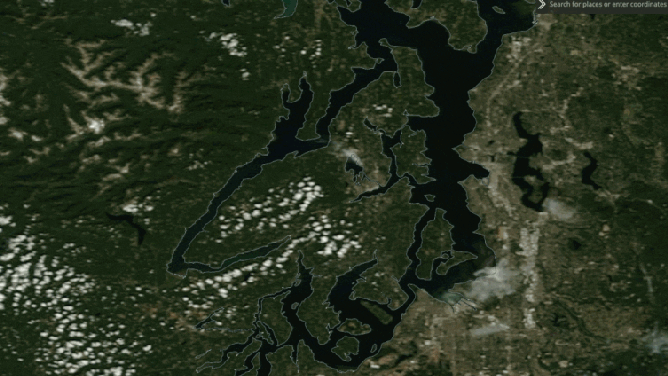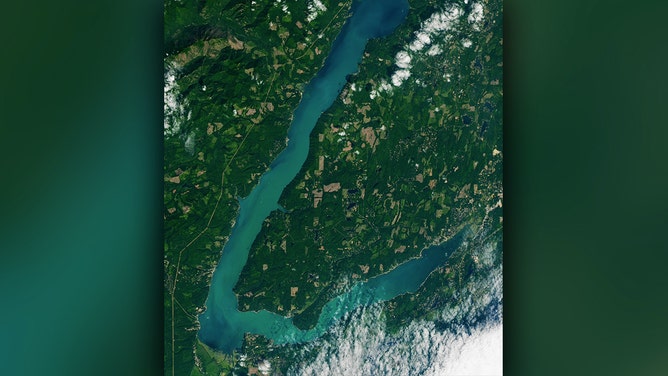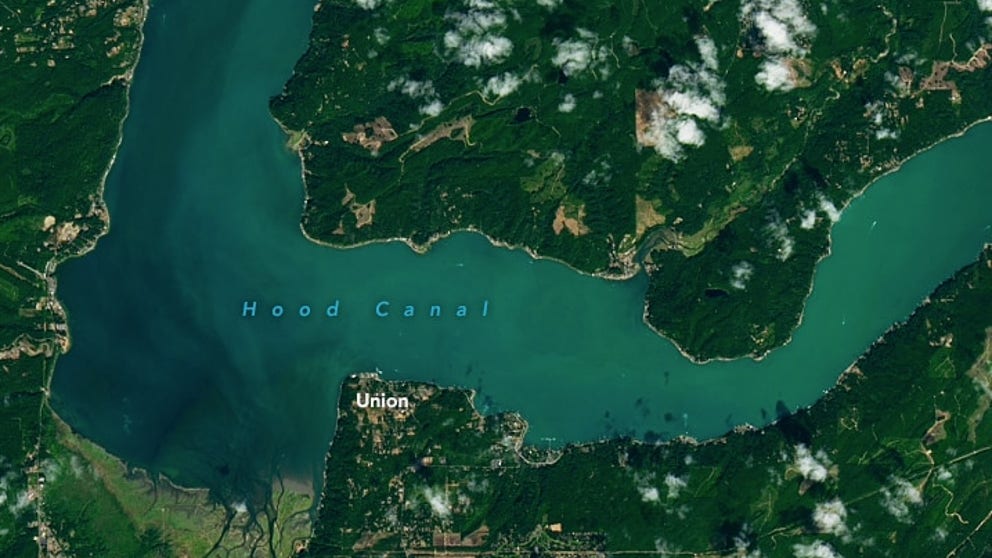Algae bloom turns Washington inlet into Caribbean-shade of teal that's visible from space
An annual plankton bloom has turned parts of the Hood Canal, a large waterway west of Seattle that frames the western edge of the Kitsap Peninsula, into a brilliant shade of teal.
Algae bloom turns waters teal in Washington
A late summer algae bloom has made the water a gorgeous color of turquoise in Washington's Hood Canal that is visible from space!
HOODSPORT, Wash. -- The weather may not feel very Caribbean-like in Washington most times, but during the late summer, some of the waters there may at least try to look the part.
An annual plankton bloom has turned parts of the Hood Canal, a large waterway west of Seattle that frames the western edge of the Kitsap Peninsula, into a brilliant shade of teal that is visible from space.

Time lapse of about two weeks in late August, 2022 showing a plankton bloom along Washington's Hood Canal.
(NASA Earth Observatory)
The microscopic, plant-like organisms, known officially as coccolithophores, are common sights in the late summer around the canal, according to NASA. They can make the darkest green or blue waters turn a bright teal or aqua color.
"This is a result of their chalky calcium carbonate plates (coccoliths) that reflect light," wrote Michael Carlowicz, of NASA's Earth Observatory site.

An algae bloom along Washington's Hood Canal turns the waters a bright turquoise.
(Jefferson County Public Health)
Carlowicz said the organisms float near the surface and turn sunlight and carbon dioxide into oxygen and sugars, eventually becoming food for other plankton and marine life. It also plays a role in removing carbon dioxide from the atmosphere and sinking it to the bottom of the waters.

(NASA Earth Observatory)
The plankton were literally a late bloomer this year, likely a delay from a cold and wet spring, which thwarted the water temperatures and salinity conditions needed for the bloom, according to Teri King, of the Washington Sea Grant at the University of Washington.
The blooms are non-toxic and do not pose any threat to marine life or humans.
